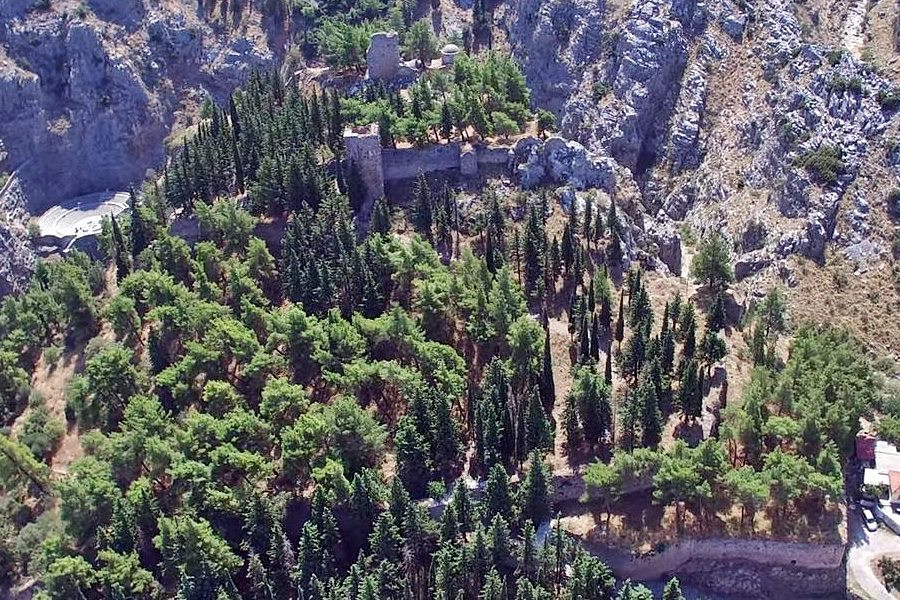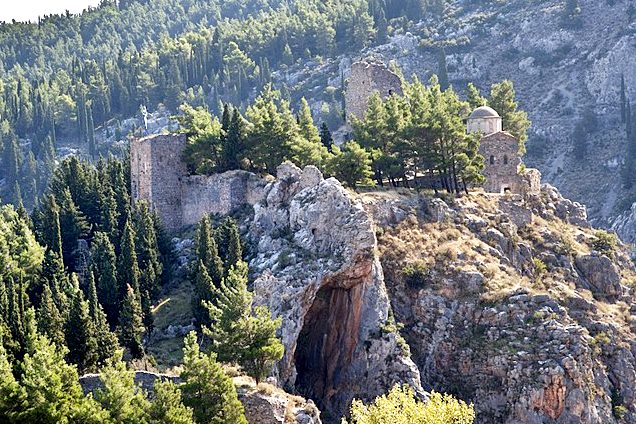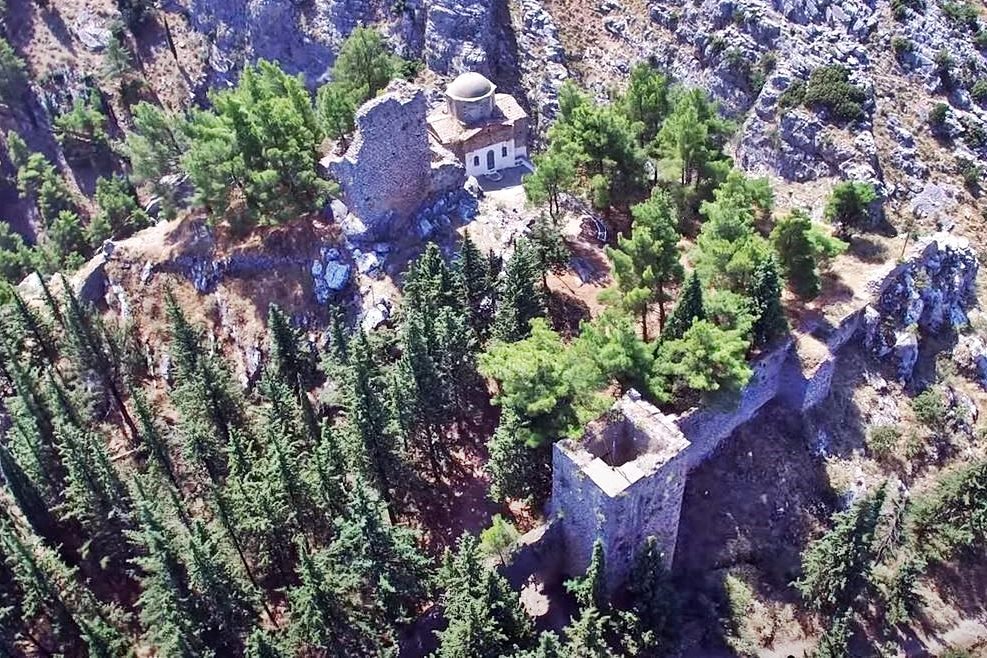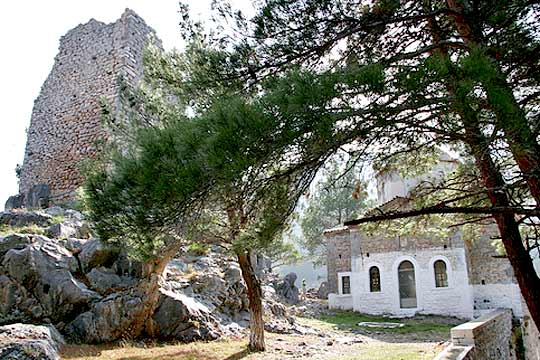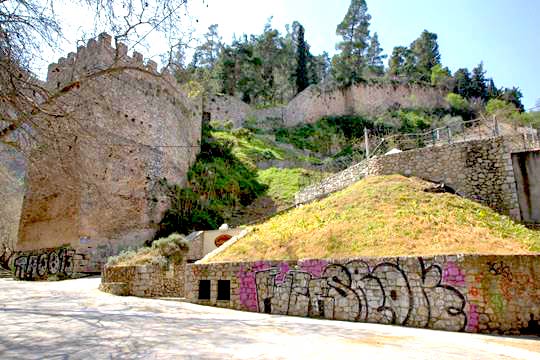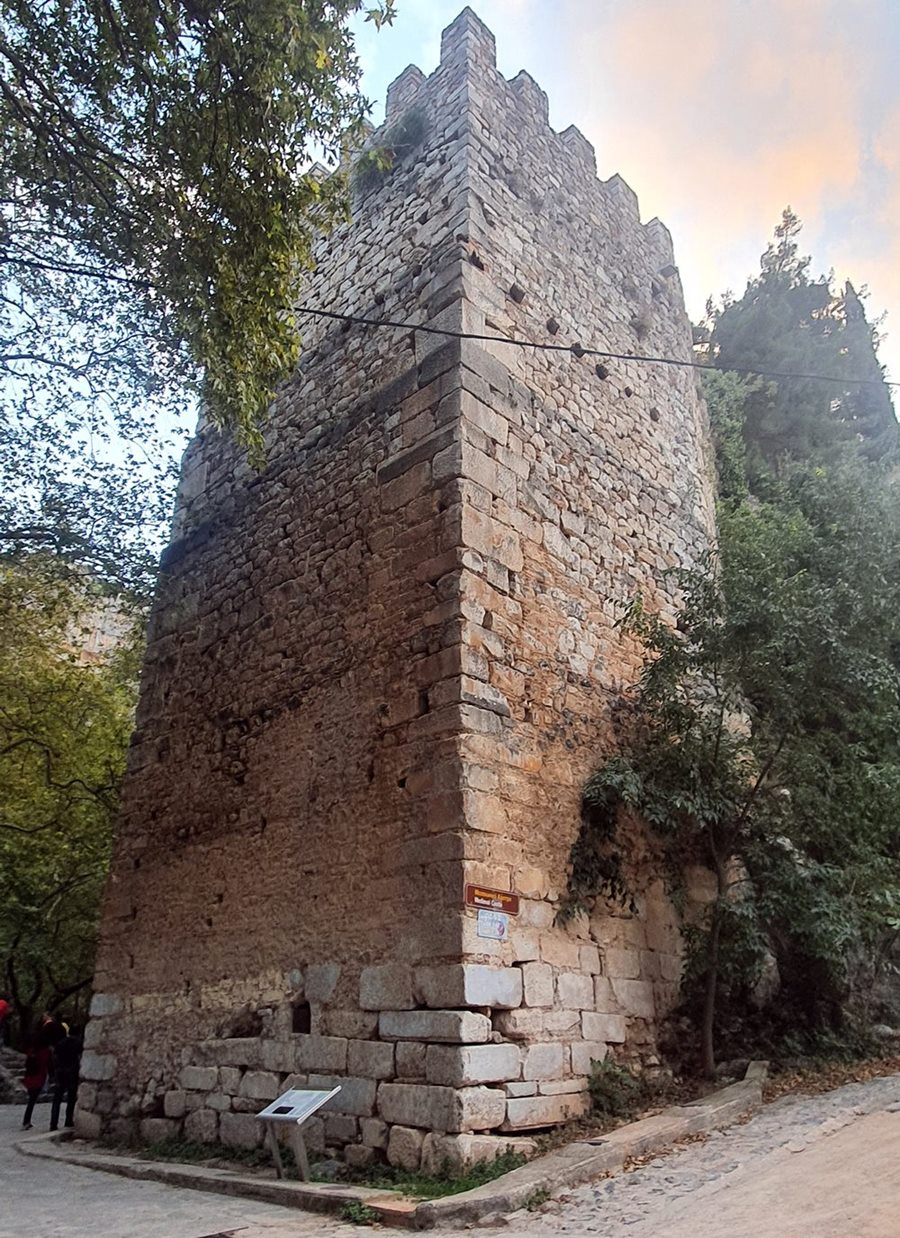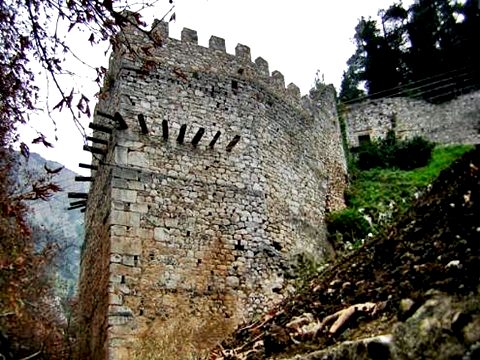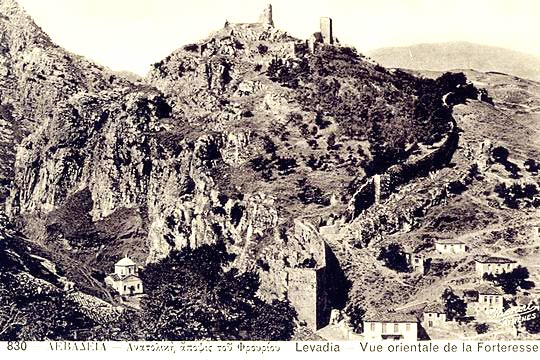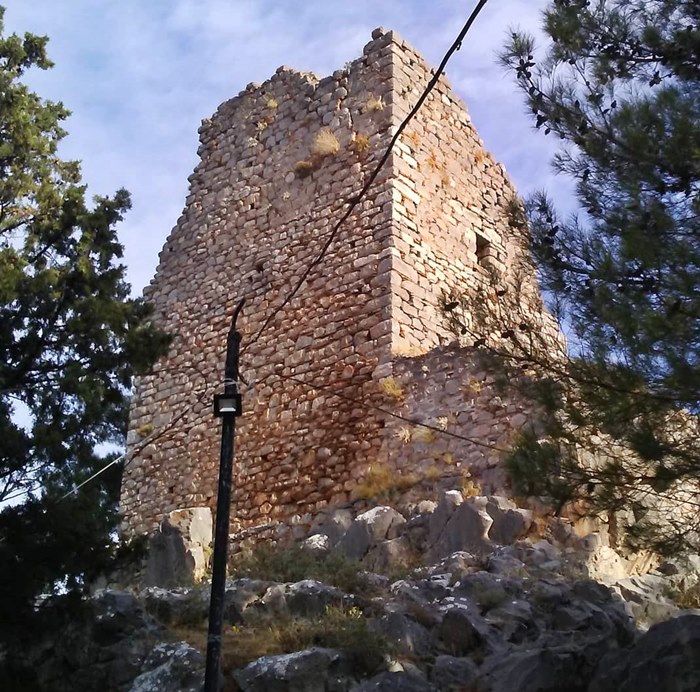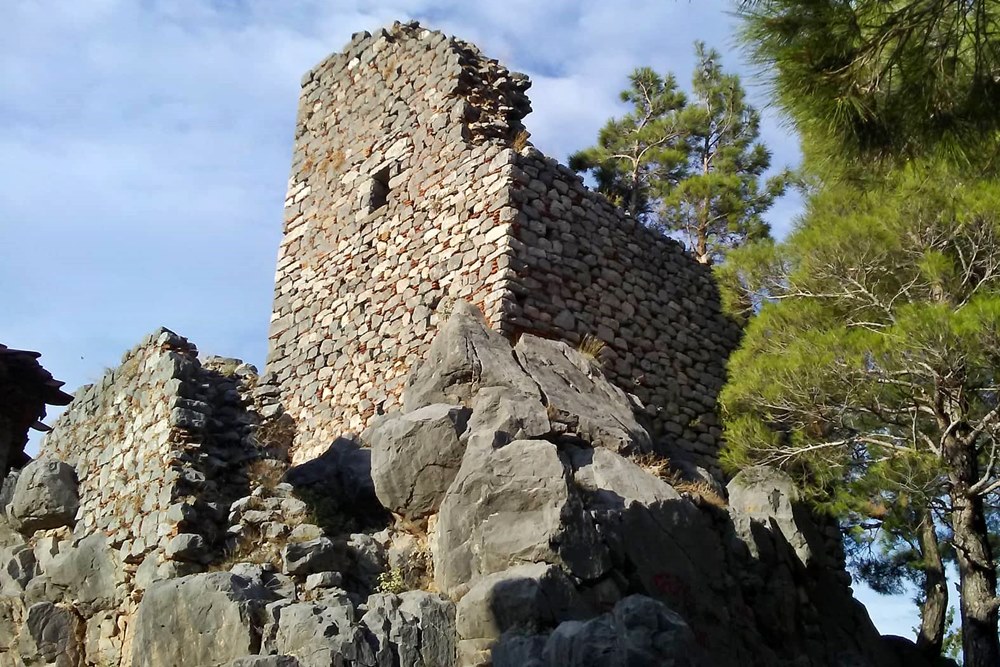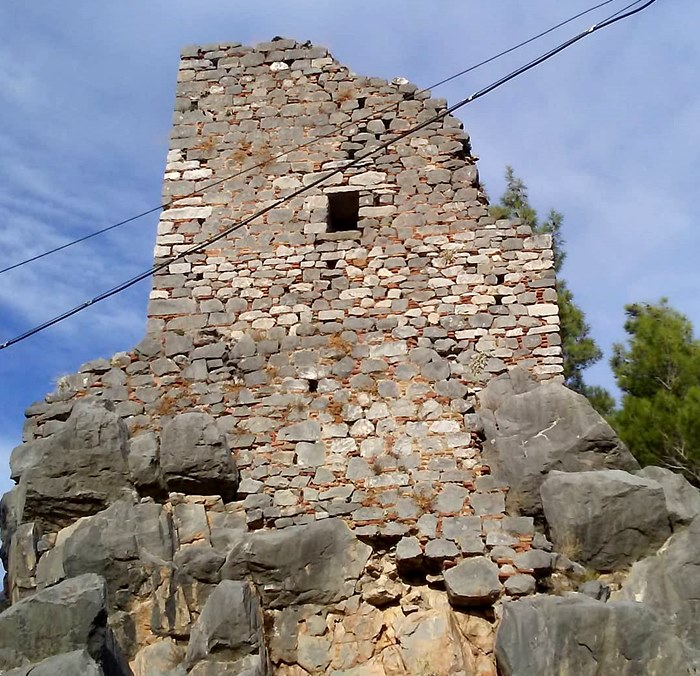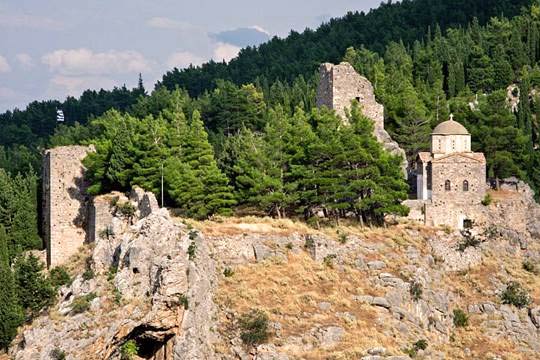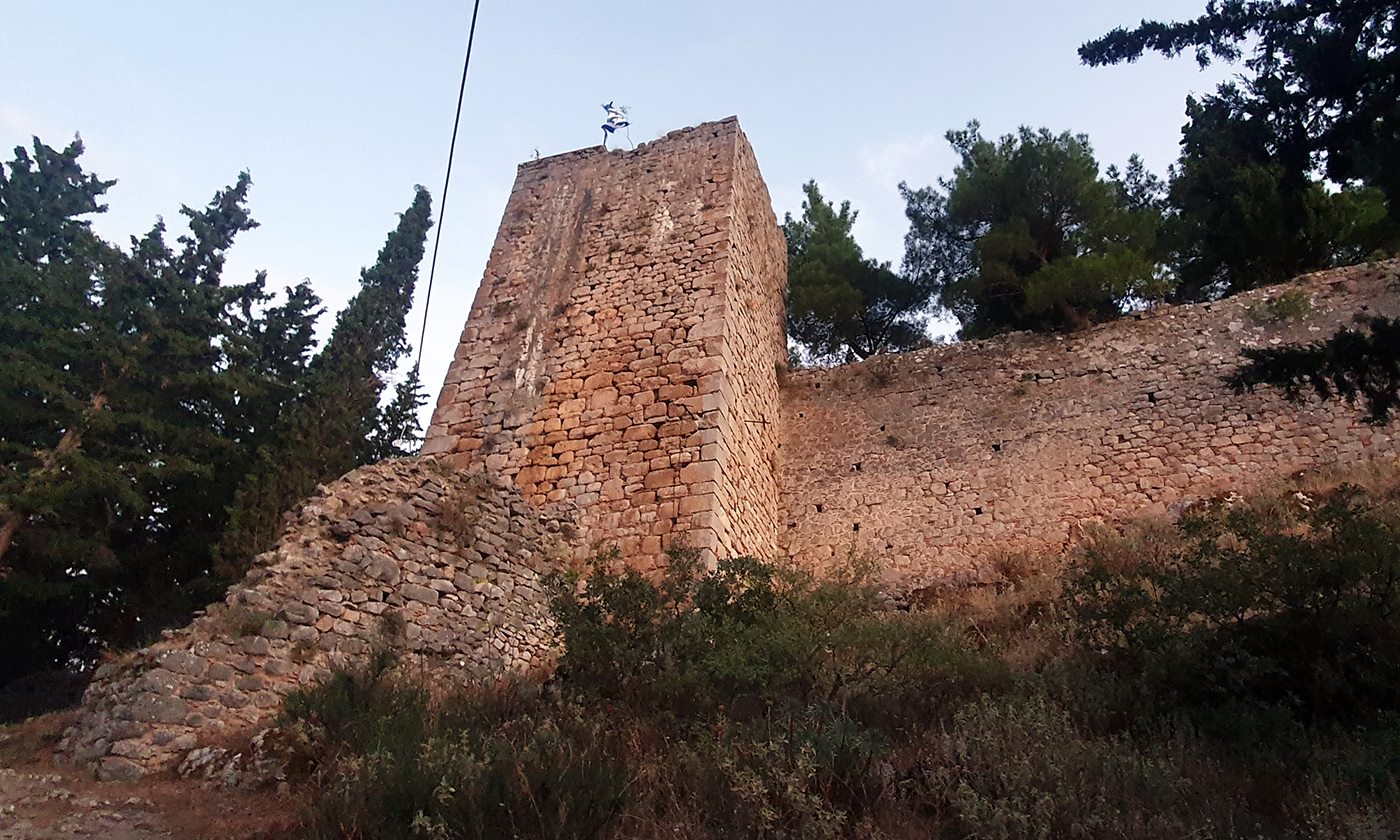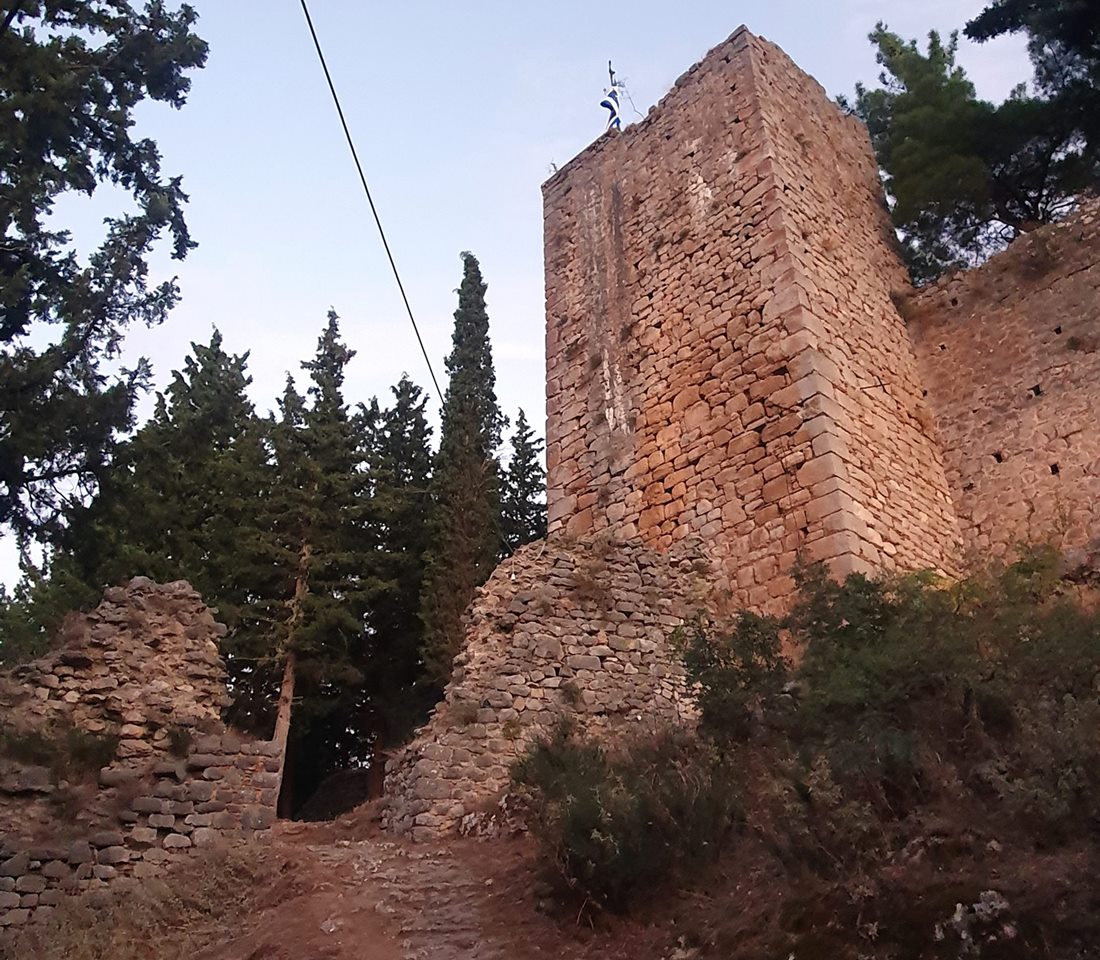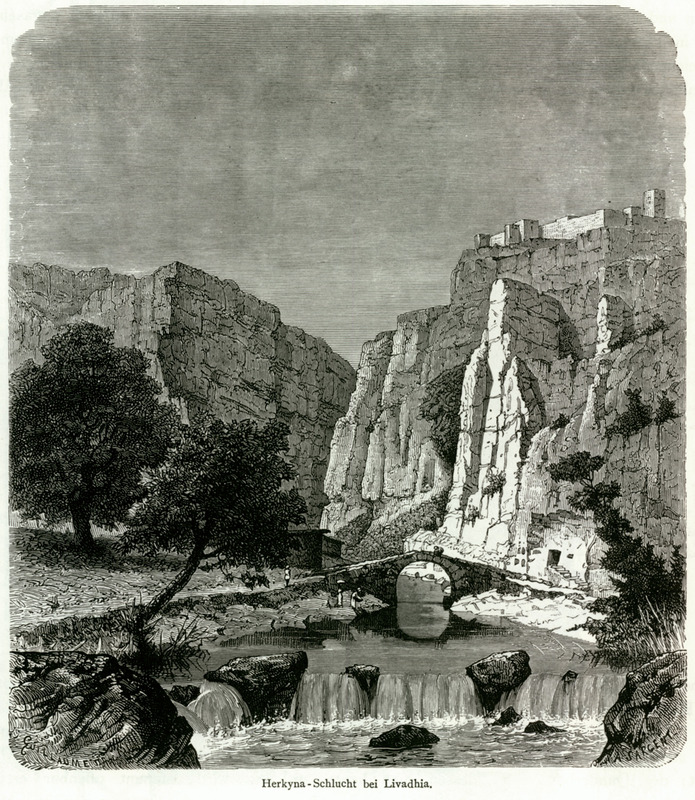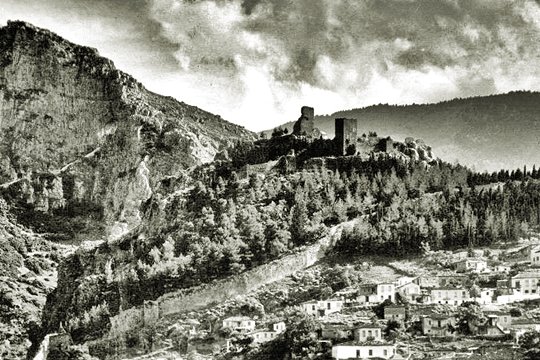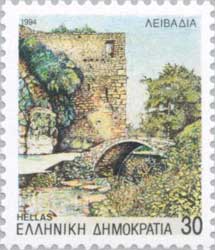Livadia, Livadeia, Boeotia,Central Greece
Castle of Livadia
| Location: |
| Livadia, on a hill at the south end of the city |
| Region > Prefecture: | 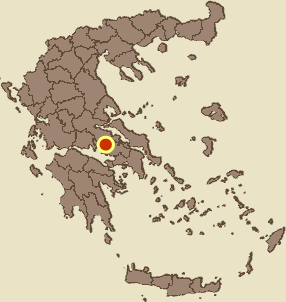 |
| Central Greece Boeotia | |
| Municipality > Town: | |
| City of Livadeia • Livadia | |
| Altitude: | |
|
Elevation ≈ 380 m (Relative Height≈200 m) |
| Time of Construction | Origin | |
| after 1311 | CATALAN |
|
| Castle Type | Condition | |
| Fortress-state |
Rather Poor
|
The castle of Livadia is on a hill, at the south edge of the city.
History
At the same location, there was an ancient fortification. at least since 5th century BC. In the ancient classical period, this place was famous because of the oracle of Trofonion, which was around here.
The fortification was used –and repaired– later by the Byzantines and by the Francs.
The final form of the castle is from the period that the warriors of the Catalan Company occupied the area. That is why the castle is considered a “Catalan castle”, one of the 4 of this kind in Greece.
In 1311, after the battle of Almyros, when the Catalans annihilated the Franks of the Duchy of Athens, Livadia was easily occupied by the Catalans, because the inhabitants opened the gates of the Castle, having secured the privilege of being naturalized Franks by maintaining the Orthodox faith and agreeing to be governed according to the “customs” of Barcelona.
During the years of Catalan rule, which lasted until 1380, Livadia was the most “Catalan” of all the cities of the Central Greece, having the largest Catalan community.
It should be noted that the Company's Catalans (all of humble origin) were generally organized into communities, which replaced the feudal organization of the Burgundian Franks.
In 1380, Livadia was besieged by the forces of another Spanish mercenary company, the Navarrese Company. The Navarrese had been recruited by the claimant to the throne of the principality of Achaia, Jacques des Baux, and after helping to occupy Corfu, they turned against the Catalans in Central Greece because the Catalan company did not recognize the rule of Jacques des Baux. The Catalans were not subjects of the Principality but their stance decisively influenced the developments, as the Catalans at the end of the 14th century were the most powerful force in Frankish Greece.
Among other cities, the Navarrese attacked Livadia. After heroic resistance, the castle finally fell after the betrayal of a Greek official named Rotarios Gaskos (Rotari Gascó de Durazzo).
With the fall of the castle in 1380, the Catalan chapter of the history of Livadia was abruptly closed and the Catalan community left the city completely, although the Navarrese were forced very quickly, in 1381, to leave Central Greece and move to the Peloponnese. We do not have a clear picture of what happened in the following years in Livadia, but in 1390 the city was found to be property of the new Duke of Athens, the Florentine Nerio Acciaioli who since 1388 had succeeded in expelling the weakened Catalans from the Acropolis of Athens and thus end their hegemony.
A period of uncertainty ensues. Nerio had serious problems with the Venetians and their Navarrese allies, and of course with the Catalans, and had not yet consolidated his power in the Duchy. In 1392, the Turks of Evrenos Bey occupied Livadia. The city was briefly liberated in 1393 by Bertraneto Motta, a Gaskon and former officer of the Navarrese company (who probably acted with the support of all westerners including the Catalans and, apparently, Nerio Acciaioli). The following year, the Turks returned and under Timurdas Pasha recaptured Livadia, but they did not hold it for long, probably because Nerio Acciaioli capitulated to the Turks and started to pay a tribute.
Nerio died in 1394 and was succeeded by his illegitimate son Antonio I Acciaioli who died in 1435. Antonio was succeeded by his nephew Nerio II Acciaioli who was obliged from the beginning to pay a tribute to the Turks. Throughout this period, Livadia belonged to the Duchy of Athens, which, however, was in constant turmoil due to disputes over succession and due to the constant Ottoman threat. Finally, in 1460, Mehmet II the Conqueror dissolved the duchy and easily occupied all its cities, although there are indications that the castle of Livadia put up some resistance.
The castle continued to be in use during the Tourkokratia. It was inhabited by a population until almost the end of that period.
Structure, Fortification & Buildings
Medieval Livadia developed on a rocky hill that rises above the gorge of the river Erkyna and is naturally protected and inaccessible from the south and east, with only access from the northeast. It descends quite steeply to the present city, above which rises about 150 m. The castle has a triangular shape with an area of about 20,000 sq.m.
There are three enclosures that are formed on the north side of the rock. The first enclosure was the wide enclosure of the medieval city, the second of the citadel at the top and the third enclosing the commander's residence at the strongest point of the hill.
The northern and eastern curtain walls of the outer fortification are preserved in relatively good condition, up to a height of 10m.
Also the northern wall of the inner fortification, the citadel, still stands at some height.
The most impressive element of the castle is the massive tower at its lowest point, near the river, at the northeastern corner. It measures 8.50✖12.0m and is 12m high. Its main purpose was to secure the water resources of the castle and also to guard the entrance to the gorge.
Another impressive tower is the one next to the gate of the citadel, a 6✖8m tower that initially must have stood at 20m. And finally the keep (donjon) at the top is in bad condition with dimensions 7✖7m. The keep was protected by a wall, of which only traces remain today.
| First entry in Kastrologos: | August 2012 | Last update of info and text: | November 2021 | Last addition of photo/video: | November 2021 |
Sources
- Website of Municipality of Livadia -Το κάστρο
- Data and info by Mr. Charalambos Sanidas, Engineer, Municipality of Livadia
- N. Kontogiannis, Catalan Boeotia: defense organization of the Ducat of Athens during the 14th century, Η Καταλανο-Αραγωνική Κυριαρχία στον Ελληνικό Χώρο, Αthens 2012, pp. 67-109.
- Video by Panagiotis Roubis Κάστρο Λιβαδειάς source also of the photos 1,3
- Photos 10,11,12 by Yohannes Dedes, Nov 2019
- Photos 6,14,15 by Dionysios Xenoulis, Oct 2020
- Σταύρος Μαμαλούκος, ΠΑΡΑΤΗΡΗΣΕΙΣ ΣΤΗΝ ΟΙΚΟΔΟΜΙΚΗ ΙΣΤΟΡΙΑ ΚΑΙ ΤΗΝ ΑΡΧΙΤΕΚΤΟΝΙΚΗ ΤΩΝ ΟΧΥΡΩΣΕΩΝ ΤΟΥ ΚΑΣΤΡΟΥ ΤΗΣ ΛΙΒΑΔΕΙΑΣ, ΔΧΑΕ 33 (2012) 7-20
- Antoni Rubió i Lluch, Περί των καταλανικών φρουρίων της Ηπειρωτικής Ελλάδος / υπό Αντωνίου Ρουβιό υ Λιούκ, μετάφρασις Γεωργίου Ν. Μαυράκη, Τυπογραφείον "Εστία" Κ. Μάϊσνερ και Ν. Καργαδούρη, Εν Αθήναις 1912
|
|
| Access |
|---|
| Approach to the monument: |
| Easily accessible from the city of Livadia. |
| Entrance: |
| Free access |



